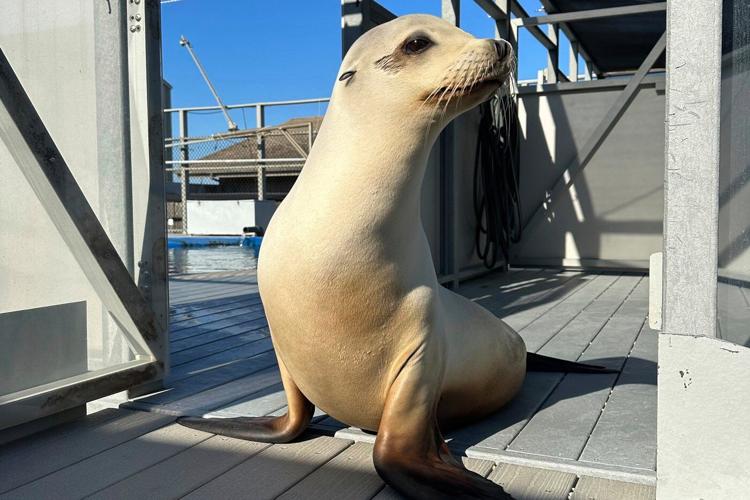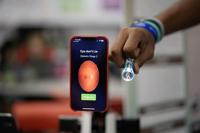Ronan the sea lion can still keep a beat after all these years.
She can groove to rock and electronica. But the 15-year-old California sea lion's talent shines most in bobbing to disco hits like
“She just nails that one,” swaying her head in time to the tempo changes, said Peter Cook, a behavioral neuroscientist at New College of Florida who has spent a decade studying Ronan’s rhythmic abilities.
Not many animals show a clear ability to identify and aside from humans, and some . But then there’s Ronan, a bright-eyed sea lion that has scientists rethinking the .
A former rescue sea lion, she burst to fame around a decade ago after scientists reported her musical skills. From age 3, she has been a resident at the University of California, Santa Cruz’s Long Marine Laboratory, where researchers including Cook have tested and honed her ability to recognize rhythms.
Ronan joined a select group of animal movers and shakers -- which also includes Snowball the famed dancing cockatoo -- that together upended the long-held idea that the ability to respond to music and recognize a beat was distinctly human.
What is particularly notable about Ronan is that she can learn to dance to a beat without learning to sing or talk musically.
“Scientists once believed that only animals who were vocal learners — like humans and parrots — could learn to find a beat,” said Hugo Merchant, a researcher at Mexico’s Institute of Neurobiology, who was not involved in the Ronan research.
But in the years since since Ronan came into the spotlight, questions emerged about whether she still had it. Was her past dancing a fluke? Was Ronan better than people at keeping a beat?
To answer the challenge, Cook and colleagues devised a new study, published Thursday in the journal Scientific Reports.
The result: Ronan still has it. She’s back and she’s better than ever.
This time the researchers focused not on studio music but on percussion beats in a laboratory. They filmed Ronan bobbing her head as the drummer played three different tempos — 112, 120, and 128 beats per minute. Two of those beats Ronan had never been exposed to, allowing scientists to test her flexibility in recognizing new rhythms.
And the researchers asked 10 college students to do the same, waving their forearm to changing beats.
Ronan was the top diva.
“No human was better than Ronan at all the different ways we test quality of beat-keeping,” said Cook, adding that "she's much better than when she was a kid,” indicating lifetime learning.
The new study confirms Ronan's place as one of the “top ambassadors” of animal musicality, said University of Amsterdam music cognition researcher Henkjan Honing, who was not involved in the study.
Researchers plan to train and test other sea lions. Cook suspects other sea lions can also bob to a beat — but that Ronan will still stand out as a star performer.
___
The Associated Press Health and Science Department receives support from the Howard Hughes Medical Institute’s Science and Educational Media Group and the Robert Wood Johnson Foundation. The AP is solely responsible for all content.









































